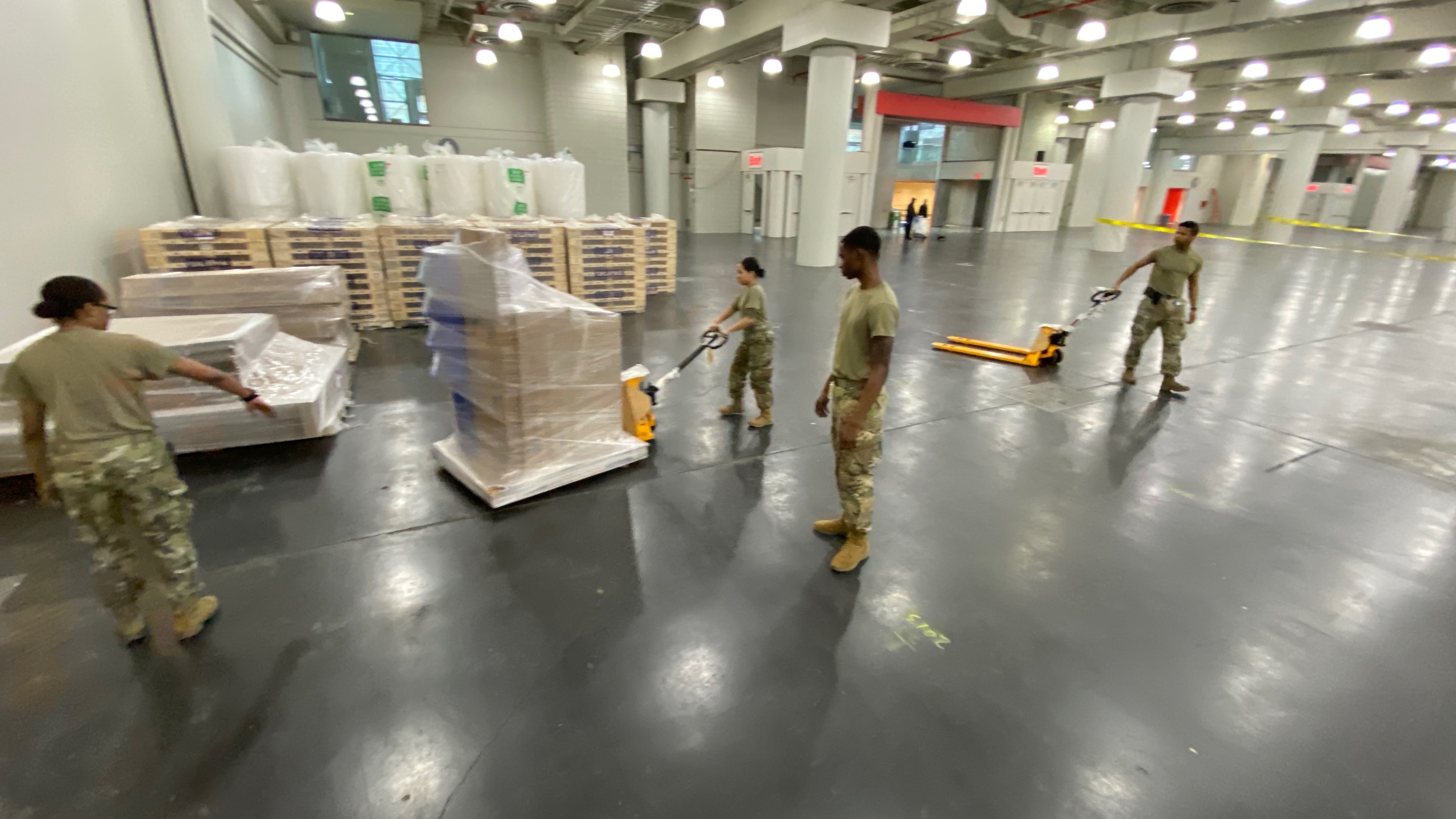As COVID-19 cases continue to surge throughout the United States, the Defense Department has sent in the Army Corps of Engineers to help cities and states increase their hospital bed capacity in anticipation of a time when medical centers are overwhelmed by critical patients.
For some places, that’ll be in the next several days to weeks, ACE chief Lt. Gen. Todd Semonite told reporters Friday, as his organization scrambles to find facilities and convert them into treatment centers.
“As I’ve been saying all week, there’s no way we can solve this with a complicated solution,” he said. “We need a very, very simplistic solution.”
In New York City this week it’s been the Javits Center’s 840,000 square feet of exhibit space, which by Monday morning will house 2,910 hospital beds for non-coronavirus patients, freeing up that space in existing hospitals.
Paneled space through the exhibition floors have hook-ups for plumbing and electricity, Semonite said, giving the ability to run full service rooms every 10 feet or so. And the more open nature of a convention center allows doctors and nurses to more freely move about and keep situational awareness of patients, he added.
The design there could be a sort of “federal solution that can be offered up to states and cities,” he said, and they can decide whether they will turn them into COVID-19 centers, or transfer other patients into the make-shift hospitals.
The moves to convert existing space into hospitals is a step ahead of discussions in recent weeks, when Defense Secretary Mark Esper was reluctant to call in ACE, instead urging cities and states to tap into their own contracting pipelines, rather than run projects through the Army.
“My hunch is, it would probably be quicker it was done at the state and local level,” Esper told reporters March 17.
But 10 days later, ACE is looking at 114 facilities nationwide that could be converted to medical facilities, including Century Link Stadium in Seattle and the Sleep Train Arena in Sacramento, California.
His organization didn’t have these plans ready to go, he said, so they’ve been relying on people on the ground to communicate what they have to offer.
“We’ve never done a pandemic capability,” he said, adding that there are no off-the-shelf designs for instant hospitals.
Semonite urged locals on the ground to get on the phone with their governments to offer up convention centers, hotels or dormitories that might convert well into hospitals, in order to speed up the process.
“If you’re a professor and there’s a dormitory with 5,000 rooms that we don’t know about, call up your state and let them know,” he said.
The next big project is in Chicago, Semonite said, where the plan is to take the McCormick Place convention center and turn it into three separate COVID-19 facilities, with each hall focusing on increasing levels of severity, totaling over 3,000 beds.
Converted convention centers have proven to be quicker to set up than field hospitals in parking lots, which are getting underway in New York and Seattle.
“You can’t do that in two or three weeks and we don’t have two or three weeks,” Semonite said.
Hotels and dormitories might be best suited to smaller cities with lower rates of infection, he said, and are certainly more accommodating in terms of privacy and comfort for patients.
But for a metropolis, it looks like the convention center model offers the most bang for the buck ― they come with their own partition equipment for making stalls and separating out rooms and they are fully staffed by experts on the facility.
“It’s got to be the good enough solution, and Javits is the good enough solution,” Semonite said.
Meghann Myers is the Pentagon bureau chief at Military Times. She covers operations, policy, personnel, leadership and other issues affecting service members.




